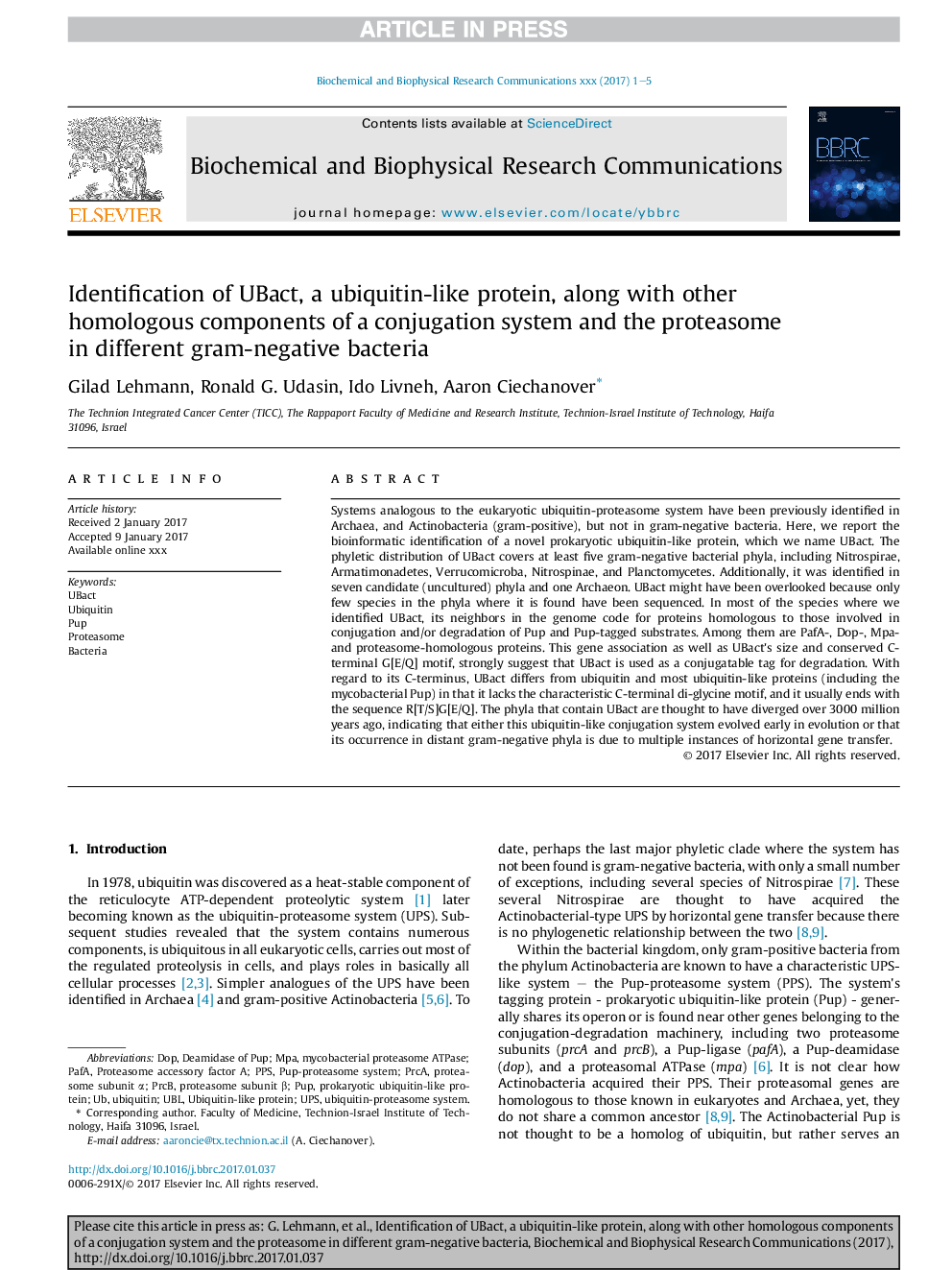| Article ID | Journal | Published Year | Pages | File Type |
|---|---|---|---|---|
| 5506350 | Biochemical and Biophysical Research Communications | 2017 | 5 Pages |
Abstract
Systems analogous to the eukaryotic ubiquitin-proteasome system have been previously identified in Archaea, and Actinobacteria (gram-positive), but not in gram-negative bacteria. Here, we report the bioinformatic identification of a novel prokaryotic ubiquitin-like protein, which we name UBact. The phyletic distribution of UBact covers at least five gram-negative bacterial phyla, including Nitrospirae, Armatimonadetes, Verrucomicroba, Nitrospinae, and Planctomycetes. Additionally, it was identified in seven candidate (uncultured) phyla and one Archaeon. UBact might have been overlooked because only few species in the phyla where it is found have been sequenced. In most of the species where we identified UBact, its neighbors in the genome code for proteins homologous to those involved in conjugation and/or degradation of Pup and Pup-tagged substrates. Among them are PafA-, Dop-, Mpa- and proteasome-homologous proteins. This gene association as well as UBact's size and conserved C-terminal G[E/Q] motif, strongly suggest that UBact is used as a conjugatable tag for degradation. With regard to its C-terminus, UBact differs from ubiquitin and most ubiquitin-like proteins (including the mycobacterial Pup) in that it lacks the characteristic C-terminal di-glycine motif, and it usually ends with the sequence R[T/S]G[E/Q]. The phyla that contain UBact are thought to have diverged over 3000 million years ago, indicating that either this ubiquitin-like conjugation system evolved early in evolution or that its occurrence in distant gram-negative phyla is due to multiple instances of horizontal gene transfer.
Keywords
Related Topics
Life Sciences
Biochemistry, Genetics and Molecular Biology
Biochemistry
Authors
Gilad Lehmann, Ronald G. Udasin, Ido Livneh, Aaron Ciechanover,
